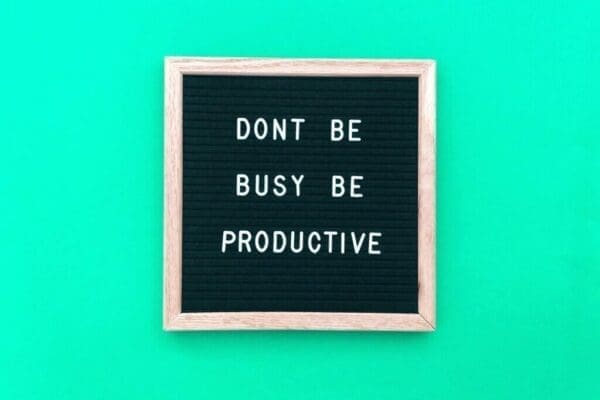Leadership Responsibilities
Leadership responsibilities can include different things for different people. As a leader moves up the hierarchy, their roles become more complicated. Leaders are, in the end, just managers. Among their responsibilities are the following: a team leader is in charge of making decisions, coaching, mentoring, improving the skills of the team, and resolving conflicts. Getting better at these important team leader skills is an ongoing process that requires consistent work. Here are five of the most important things a team leader needs to do.
Roles of a Team Leader
1. People in the Training Group
A good team leader helps team members reach their goals and learn the skills they need to be successful. Coaching involves improving the performance of team members, giving them feedback, and showing that you have the right skills and work ethic. A coach-style team leader works with team members to help them improve their skills.
2. Make a List of Your Strengths and Weaknesses
The team leader must also figure out what the team’s strengths and weaknesses are. By figuring out which team member is best at each task, you can give the necessary tasks to the most qualified person. Also, it helps to figure out what needs to be fixed and what steps to take to fix them.
3. Set Goals for the Team and Evaluate its Progress
To figure out how well a team is doing, you need to define what success means. Evaluation of the team’s goals and how success will be measured could help clear up any confusion. This makes it clear to everyone on the team what they need to do. Teams can work together if they have clear goals and check in on their progress along the way.
4. Sort Out Any Problems
Because teams are composed of individuals with diverse personalities, work styles, and motives, conflict can occasionally arise. When it’s possible, it’s up to the team leader to stop and solve conflicts. By setting ground rules and assigning work in the right way, you can get rid of many possible sources of conflict. It’s better to solve a problem before it gets worse. Meeting with both team members can help figure out what’s really going on. By talking with the other members as a group, everyone has a chance to find a solution that works for both sides.
5. Take Charge of Group Projects

When several people on a team are working toward the same goal, they need to be organised. Individual projects, objectives, communications, and vital documentation must remain transparent and accessible. The team leader is in charge of setting up meetings, deciding what to talk about, and making sure the team is making progress toward the goal.
Duties of a Leader
Team leadership is a hard job with many different responsibilities. There are so many choices that it can be hard to figure out what the most important duties of a leader are.
These are 3 Key Duties of a Leader”
- Leaders need to know what their goals are.
- They must inspire and lead the people who work for them.
- They need to help their teammates if they want to do well.
In this article, we’ll talk about the three most important roles of a good leader.
Leaders Must Communicate a Vision
Leaders who are good at what they do give their team a clear goal. A vision is a mental picture of what you want to happen in the end. This vision gives employees a path to follow and a reason to work.
If this vision is shared and carried out well, it can inspire a team to do well. If the company’s goals aren’t clear or aren’t explained well, it’s easy for the crew to lose interest.

The ability of a leader to set a vision will affect how well their team does, so they need to be able to talk to their followers in a way that makes sense to them.
Your team will know where to go if you have a clear plan. When the company’s vision isn’t clear or doesn’t give employees a sense of purpose in their jobs, it may be hard for them to do their best work and take the lead when making decisions on their own.
Leaders Must Encourage and Inspire People to Act
How do leaders give their teams inspiration and drive?
A leader must first understand that people need to feel like they own something in order to be driven. Leaders can do this most effectively by giving people chances to take charge.
Leaders Must Give Incentives to the Staff So They Know What it Takes to be Successful
Employees are more likely to work hard when they know what is expected of them. Give people incentives like a pay raise, a bonus for good work, or more work to keep them on track, like a promotion or a raise in pay.
Leaders must make sure that their employees have the freedom and power to make decisions on their own. This method not only makes them feel more valued but also gives leaders a chance to step back and look at the situation from a different angle.
Key Leadership Responsibilities
-
Leaders Must Set up the Right Conditions for Success
Leaders are responsible for how their teams do and must be aware of how what they do affects them. Leaders need to be able to talk to their employees well, know when to take risks and when not to, and set reasonable goals for themselves and others. These traits will help leaders create an environment where everyone has a chance to succeed.
A good leader also helps the team work together. If your employees feel supported, they are more likely to take calculated risks that are in line with the company’s goals. When employees know that their bosses will back them up, they are more likely to work harder to reach the vision.
-
Bringing it all Together
You must do these three things to be a good leader. As you probably already know, there are many different ways to lead. But if you know the basics of what it means to be a good leader, you can set yourself up for success.
Our Essential Strategy method and knowledge toolkit give our clients the power to take control of these important processes so that they help the organisation reach its goals and fulfil its mission instead of getting in the way. Check out what we can offer.
Leader Roles
Here are some of the most important things a leader does:
1. Leaders Encourage Working as a Team

Teamwork depends on the leader, the people who work under them, and the environment. These things are tied together. It is the leader’s job to make the workplace a good place to work. To encourage teamwork, employees are taught to care about the group as a whole.
2. Leaders are the People Who Speak For Their Followers
He is the link between the work units and the people in charge.
3. The Leader is a Good Counsellor Because
A lot of the time, people need counselling at work to deal with the emotional imbalances that sometimes develop in them. He gets rid of things that get in the way of good performance.
4. Uses Power in the Right Way
If a leader wants to reach the goals that have been set for him, he needs to be able to act in a way that gets a good response from the employees. A leader uses different kinds of power, such as reward power, conceptual power, legitimate power, representative power, and expert power, depending on the situation. Along with the legal basis of authority, the informal basis has a bigger effect on how well an organisation works. No leader can do his job well if his followers don’t follow him.
5. A Good Leader Knows How to Use Time Well
Time management is important and valuable, but it is often forgotten by managers. There are three important ways to look at time in literature: the time your boss gives you, the time the system gives you, and the time you give yourself. The leader is able to get the most out of everyone’s time because he knows how to manage it well. For example, he knows how to make time-planning charts, set up schedules, etc.
6. Try to Be Productive

Managers are often workaholics who are too busy with small things to pay attention to important effectiveness details. To make up for the gap, a leader will sometimes work hard to improve effectiveness by promoting and encouraging teamwork, getting better at managing time, and using power in the right way.
Leaders are judged more on who they are as people than on what they do.
Examples
Here are some examples of leadership roles to help you learn how to be a good leader.
- Coaching: the job is to give employees the help they need to do their jobs well.
- Networking: a leader should connect with people both inside and outside the company. Networking helps and strengthens relationships between coworkers, teams, and clients.
- Communicator: a leader needs to be able to talk to employees, clients, suppliers, and members, among other people.
- Communication: this includes written presentations that a leader needs to use in meetings, seminars, and with any group of people.
- Delegator: a leader should give certain people tasks and roles to do. The roles should be based on what people are good at and what they can do.
8 Key Leadership Skills
1. Getting Information Across
As a leader, you need to be able to clearly and concisely explain everything to your team, from the organization’s goals to each person’s tasks. Leaders need to know how to talk to people in one-on-one, group, and all-staff settings, as well as over the phone, email, video, chat, and social media.
Leaders should make sure their employees or team members can always talk to them by having an open-door policy or having regular meetings.
Listening is a big part of communicating. Leaders should always be available to staff to talk about problems and concerns.
2. Motivation

Leaders must find ways to get their employees to go the extra mile for their companies. Fair pay is not always enough motivation (although it is important too). There are many ways to motivate your staff, such as giving them praise and prizes to boost their self-esteem and giving them more work to do to make them feel more invested in the company.
Leaders have to figure out how to get their employees or team members to work hard and be passionate about what they do.
3. Delegating
Leaders who try to take on too many tasks on their own will find it hard to get anything done. Most of the time, these leaders think that giving work to other people is a sign of weakness when it might actually be a sign of a strong leader.
So, you need to find out what each employee’s skills are and give them responsibilities based on those skills. By enacting delegation and giving tasks to other people on your staff, you can focus on more important things.
4. Positivity
In an office, having a good attitude can help a lot. This makes for a good and healthy work environment, especially when things are busy and stressful.
Simple things like asking coworkers what they have planned for the weekend or vacation will make the office a nicer place to be and boost morale.
If employees think they work in a happy place, they will be more motivated to be there and more willing to put in extra hours when they are needed.
5. Dependableness
The workers must feel like they can talk to their manager or leader about questions or concerns without fear of being hurt. People will only follow leaders they respect, so being honest is very important.
If you are open and honest with your employees, they will be more likely to do the same.
6. Being Creative
As a leader, you have to decide on a lot of things that don’t have a clear answer. So, you need to be able to think outside the box.

If you learn to use unusual methods and approaches, you will be able to solve problems that would be impossible to solve otherwise.
Also, many employees will be surprised and inspired by a boss who doesn’t always do what is expected.
7. Your Thoughts
Leaders should always be on the lookout for chances to give their team members useful feedback on their performance. But there is a thin line between giving advice and helping people and running their lives for them. You will feel better about giving your employees tasks if you teach them how to improve their work and make decisions on their own.
Also, employees will respect a leader who tells them what they did wrong in a clear and kind way.
8. Being Responsible
A leader is responsible for what his or her team does well and what goes wrong. So, you have to be ready to take responsibility when things go wrong.
If your employees see you pointing the finger at others and putting the blame on them, they will lose respect for you. Accept your mistakes and failures, and then come up with clear ways to get better.
5 Common Leadership Responsibilities of Team Members
- Completing every task that the team leader gives them
- Working with other people on the team to reach goals set for the day, week, or month.
- Taking part in meetings and making suggestions that could help things get better.
- Getting better at their jobs and skills by going to training sessions and workshops.
- Help the leader reach the goals that were set.
How Can I Be a Good and Responsible leader?
First, lead. Good leaders first lead themselves. Learn your strengths and weaknesses. You know how you and others tick. Self-discovery That helps you lead.
Good leaders want to hear from as many people as possible. To be a good leader, you should give feedback to others and also look for feedback from others. Trying to get feedback helps you figure out what you can do better and where you need help.
Ready to try new things. Leaders should encourage their teams to talk about what they think and feel. In this way, they keep coming up with new ideas. Innovation makes it easier for a company to reach its goals in a simple way.

I’m getting out of my comfort zone. Learning and getting better don’t happen when you are too comfortable. Leaders need to learn how to take chances. Taking risks is good for the team as a whole and for the leader as well. They figure out how to do the same thing and get better because of it.
Why are Leadership Responsibilities Important For Success?
In these times of uncertainty and many changes, when businesses are trying to stay competitive, a leader’s duties are more important than ever. Leaders should always work to improve themselves and help the rest of the team do the same. The best leader doesn’t just think about himself; they also tries to steer the whole group in the same direction.




